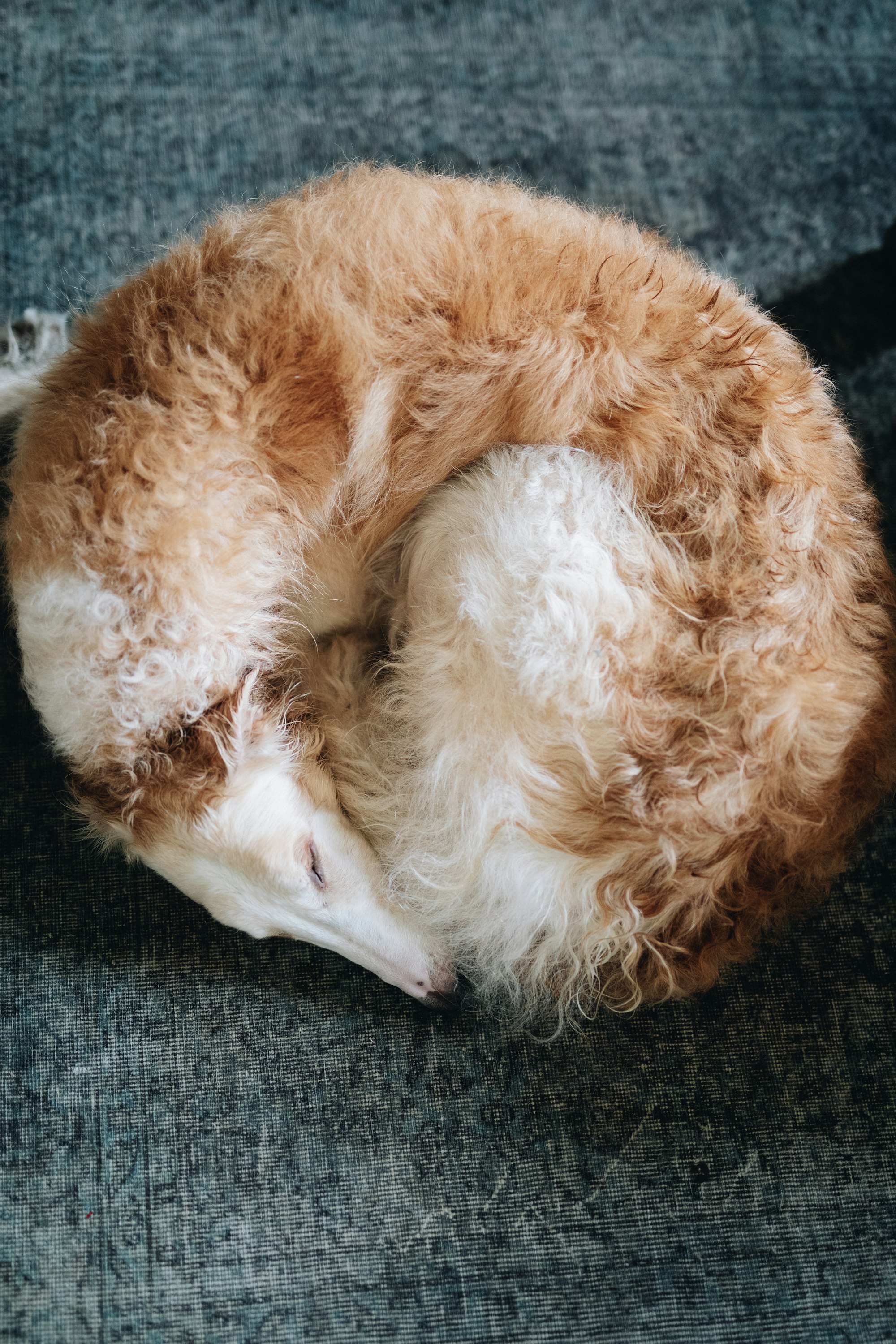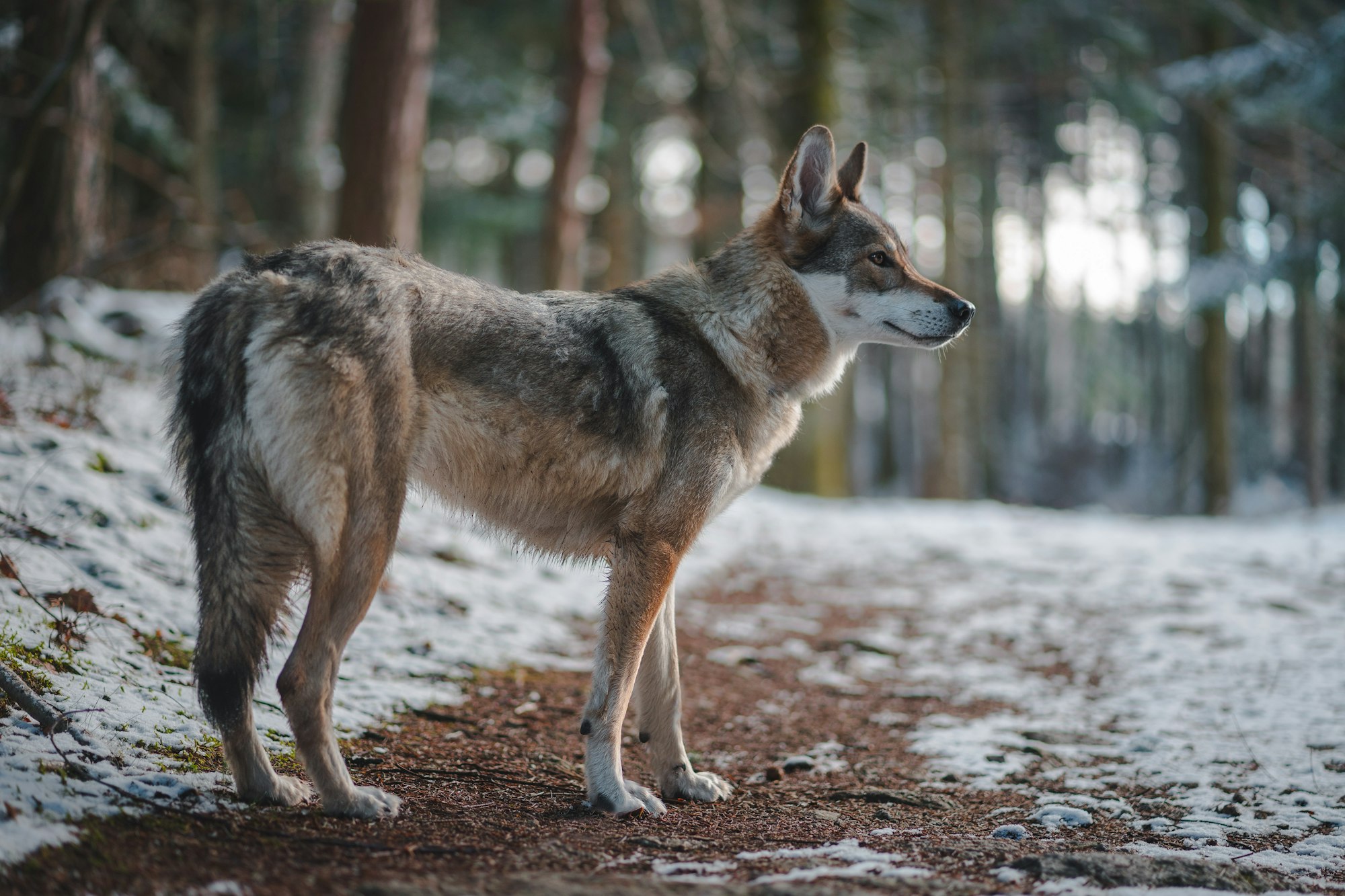The same ritual probably plays out every night at your home. It’s getting close to bedtime. Your dog goes to his bed and turns around several times before he finally settles down for the night. Cats will sometimes follow a similar pattern or just knead a spot with their paws before they go to sleep. Is it just a habit? Is your pup just trying to get comfortable? Why do dogs walk in a circle before lying down?
There are several ways to approach this question, going from the obvious to the evolutionary benefits that it may offer dogs today and ancestors from the past.

The Comfort Angle
It makes sense that your dog would want to get comfortable before going to sleep. After all, we do it, too. Sufficient sleep is vital for both humans and canines. A lack of rest can usher in a host of health problems for man and beast. Your pup just might be trying to rearrange the pillow or blanket in his bed.
Before comfy dog beds, ancient canines had to make themselves comfortable on the ground, with vegetation acting as their pillow. When your pup circles around before lying down, he may be reenacting a practice from long ago in its past. However, like many behaviors, this one probably has an evolutionary reason, too.
Assessing the Lay of the Land
Dogs and wolves share a common ancestor that goes back, 19,000–32,000 years ago in Europe. Even though the species diverged thousands of years ago, modern-day animals still have the hardwiring for a time in the past. It includes many instinctive behaviors that operate on auto-pilot. Humans are the same way. If we want to determine why dogs circle before lying down, we must look to the past for answers.
The dog’s wolf ancestor lived in perilous times, with many other predators lurking around the land in search of prey. Chief among these competitors were early humans. It was literally a dog-eat-dog world, with our ancestors wiping out the competition for food. Even humans were in on the action, killing whatever animals were a threat to their survival.

Therefore, it behooved any creature to stay on its guard. A predator could easily take advantage of an animal if it didn’t, no matter what its position on the food chain. Unfortunately, sleeping does the opposite and makes any animal vulnerable to predation. Yet, rest is imperative, despite the dangers it invites.
Some scientists have suggested that the wolf’s answer to this dilemma was to circle before lying down to get into the best defensive position. That could mean facing into the wind to pick up the scent of a possible enemy. It could mean backing up against a rock or tree to prevent a sneak attack from the rear. Any of these things could give a resting animal an edge if something approached during sleep.
Evolution would then have selected for these behaviors because they’d be the animals that would survive to reproduce and pass these traits onto their young. The ones that didn’t would not, thus, eliminating them from the gene pool.
Maintaining the Pecking Order
Wolves may have also circled to account for all the pack members. That could ensure every animal laying together was supposed to be there. It might also have been part of the ritual to reaffirm the hierarchy of the pack. These canines are one of the few species other than hyenas that form these close associations. Each wolf’s place in the pack is constantly reinforced to preserve the pecking order of the group.
It’s worth noting that domesticated dogs and wolves share many behaviors, hearkening back to their shared evolutionary history. Your dog may merely be acting as evolution has taught him.

Staying Warm
Ancient wolves and dogs went on their own paths about 27,000 years ago. One of the oldest ancestors comes from the Taimyr wolf lineage from northern Siberia. Some domesticated dog breeds are closer to the evolutionary roots than others, such as the Siberian Husky.
This breed can have up to 27 percent of its ancient DNA. That fact provides further evidence for the link between wild canine behavior and our pets. It also provides another clue about circling behavior. Remember that we’re talking Siberia, a place that has a mean annual temperature of 31℉. A dog turning around before laying down might simply be trying to curl up as tight as possible to stay warm.
While we don’t know the exact path that they took, domesticated dogs had separated into five different lines at least 11,000 years ago. However, they all likely go back to one ancestor that acted in its best interests for survival. It didn’t matter whether it was against predators, intruders in the pack, or merely to stay warm during cold nights.
A Modern Twist
We can also view circling behavior from a modern-day perspective. Perhaps, your dog is acting on instinct to get comfortable and warm because it can do so without the fear of predation. Your pup may actually be letting down its guard because instinctively he knows what he is safe in his home. What you’re seeing is a remnant of an archaic behavior that still plays out, even if it’s unnecessary.
Final Thoughts
We may never know the reason why dogs circle before lying down to sleep. However, many instinctive behaviors have an evolutionary origin tied to survival. It’s the same with other things your pup may do, such as chasing a fleeing rabbit before he has figured out what it is. Instincts allow animals—and people—to save precious time instead of wasting it on making a decision.
Perhaps this simple explanation says it all. In a world before dog beds, puppy treats, and Kong toys, dogs’ ancestors picked up several behaviors that helped them survive to live another day. While your pet doesn’t have to worry about predators in the night, instinct tells him to act as if there were still around, waiting to pounce.

